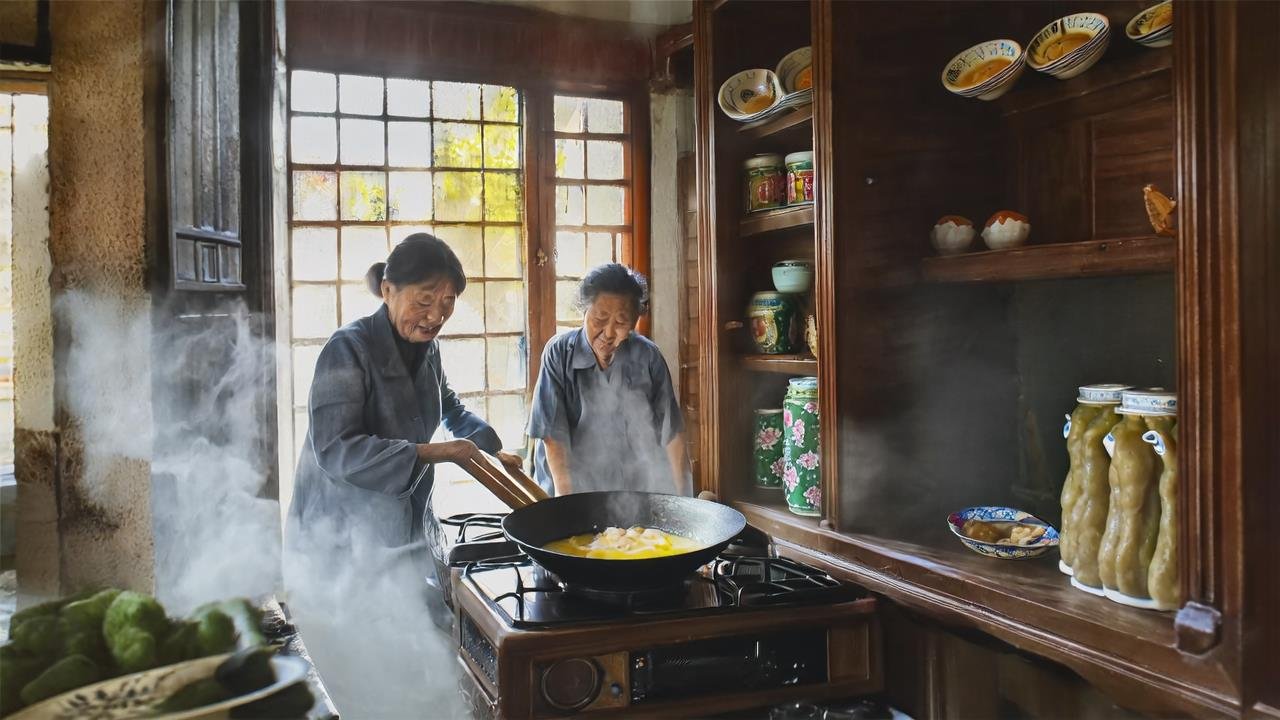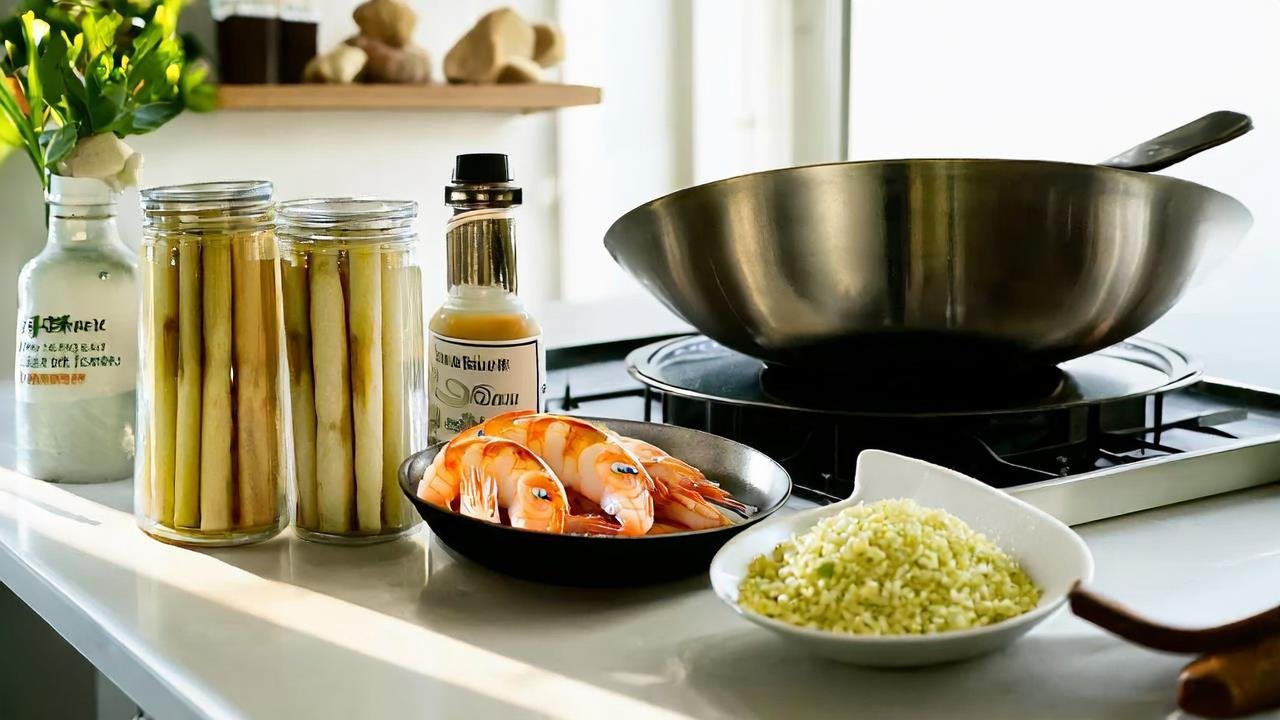Shrimp & Bamboo Shoot Fried Rice? Yes, It’s the Umami-Packed Classic You Need to Make
When I was a kid, my grandma’s tiny kitchen in Suzhou—an ancient city in eastern China—was my happy place. The walls were lined with ceramic jars of pickled veggies, and the air always smelled like garlic hitting hot oil. But spring? That’s when magic happened. Rain would drum on the tile roof, and grandma would pull out two things: a glass jar of brined bamboo shoots (her winter preserve) and a mesh bag of fresh river shrimp, still wiggling. She’d toss them into a scorching wok with day-old rice, and within 10 minutes, the whole house smelled like home.
That dish? Shrimp & Bamboo Shoot Fried Rice (or xiā sǔn chǎo fàn in Mandarin). It’s a staple from China’s Jiangnan region—a watery, green corner where rivers feed shrimp and bamboo groves sprout tender shoots after April rains. The logic is simple: umami synergy. Bamboo shoots bring a crisp, earthy sweetness (like if a carrot and a mushroom had a baby), while shrimp adds a briny, ocean-fresh pop. Together? They turn plain rice into something that makes you close your eyes and sigh.

First Things First: What You’ll Need (And How to Find It in the U.S.)
You don’t need a Chinese market to make this—most ingredients are at your local grocery store. Here’s your shopping list, with American pantry hacks:
- Bamboo shoots: Grab a can of young bamboo shoots (look in the Asian aisle or international section). Rinse them well—canned shoots are often salty, and we want that sweet, earthy flavor to shine.
- Shrimp: Peeled, deveined raw shrimp (1 pound). Fresh is ideal, but frozen works (just thaw completely and pat dry—dry shrimp = crispy shrimp).
- Rice: Day-old jasmine or long-grain rice. Cold rice fries better—no mushy, clumpy mess. If you’re in a hurry, cook rice the night before and refrigerate it.
- Aromatics: 3 minced garlic cloves, 1 teaspoon grated ginger, 2 sliced green onions (white and green parts separated).
- Sauces: Light soy sauce (2 tablespoons—this is the “salty, savory” base; avoid dark soy sauce—it’s too sweet). Oyster sauce (1 tablespoon—adds deep, meaty umami; use vegan oyster sauce if you’re plant-based).
- Oil: Peanut or vegetable oil (high smoke point—essential for stir-frying without burning).
Pro tip: If you don’t have a wok (a Chinese stir-fry pan with a round bottom), a large skillet works—just make sure it’s hot (like, smoking hot). Woks are great because they distribute heat evenly, but don’t stress—this recipe is forgiving.

Let’s Fry Some Rice: The Step-by-Step (No Stress, I Promise)
Stir-frying is fast—so prep all your ingredients first (chop, measure, line everything up). This is called mise en place in French, but grandma just called it “being smart.”
- Prep the goods: Drain the bamboo shoots and chop them into ?-inch pieces. Pat the shrimp dry with paper towels (trust me—this makes them crispy, not rubbery). Slice the green onions (save the green parts for garnish).
- Heat the pan: Put your wok (or skillet) over medium-high heat. Add 2 tablespoons of oil. Once the oil shimmers (not smoking!), toss in the garlic, ginger, and white parts of the green onions. Stir for 10 seconds—until fragrant (don’t burn them! Burnt garlic is bitter).
- Cook the shrimp: Add the shrimp and stir-fry for 2-3 minutes until they turn pink and curl into little Cs. Use a slotted spoon to transfer them to a plate—we’ll add them back later.
- Sauté the bamboo shoots: Add a tiny bit more oil if the pan is dry. Toss in the bamboo shoots and cook for 1 minute—this wakes up their flavor.
- Fry the rice: Add the cold rice to the pan. Use a spatula to break up any clumps (press down gently—don’t mash it). Stir-fry for 3-4 minutes until the rice is heated through and starts to get crispy on the edges. This is the “golden moment”—when the rice goes from “meh” to “oh wow.”
- Season it up: Drizzle in the soy sauce and oyster sauce. Stir fast—you want every grain coated. Add the shrimp back in, then toss in the green parts of the onions. Stir for 30 seconds to combine.
- Taste and adjust: Take a bite. Need more salt? Add a splash of soy sauce. Too salty? A pinch of sugar (it balances the flavors—grandma’s secret!). Done!
Why This Recipe Works (And Why You’ll Make It Again)
The first time I made this in my Brooklyn apartment, my roommate (a born-and-raised New Yorker) took a bite and said, “This is better than my favorite takeout.” That’s the magic of this dish: it’s authentic, but accessible. It doesn’t require you to learn a new cooking style—just to trust the process.
And let’s talk about the flavor: it’s complex, but not overwhelming. The bamboo shoots add crunch, the shrimp add sweetness, the soy sauce adds savoriness—every bite has something to keep your taste buds happy. My grandma used to say, “Good fried rice is like a song—every ingredient has a part to play.” She was right.
Final Thoughts: Cooking Is About Stories
When I stir this fried rice, I think of grandma: her hands covered in flour from making dumplings, her laugh when I stole a shrimp from the bowl, her voice saying, “Slow down—good food takes time.” This recipe isn’t just about rice and shrimp—it’s about passing down love, one bite at a time.
So grab your pan, turn up the heat, and let’s cook. You don’t need to be a pro—you just need to care. And when you take that first bite? I promise: you’ll taste spring in Jiangnan, you’ll taste grandma’s kitchen, and you’ll taste joy. That’s the power of food.
Happy frying!